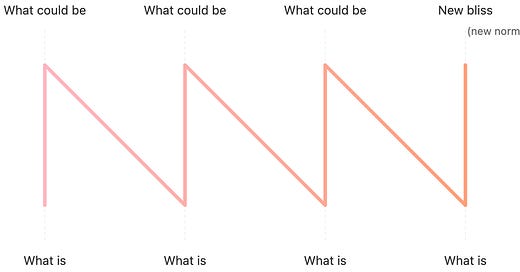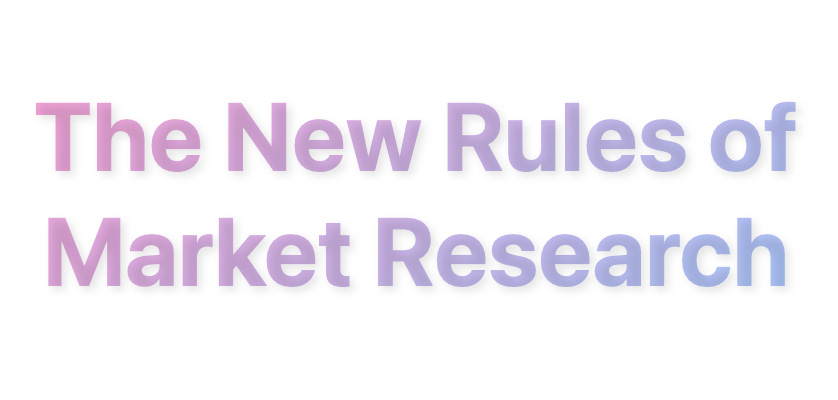10 Research Rules Every Brand Should Follow in 2025
How to stay relevant, customer-focused, and innovative this year.
Consumer behavior is rapidly shifting, so here’s my modern, practical guide for brands and researchers conducting effective and culturally nuanced market research this year. Inspired by The New Rules of Media, I’ve compiled my thoughts, with hopes that following these steps will ensure more people will reach for their wallets to support your brand and tell their friends to do the same in 2025.
Don’t rely solely on your Excel files. A holistic understanding of consumer behavior requires both quantitative and qualitative data. And while that quant data is a great place to start, you can’t live in the spreadsheets to understand what matters most to customers. Move beyond surveys and high-level quant methods and go out to talk to your customers. Go through their day with them, observe the way they live their life, and listen to their desires and challenges.
Search for reviews of your product(s) on Reddit, TikTok, YouTube, etc. Pop your popcorn, get comfy, and scroll through the comment section. This unprompted, authentic feedback where people are speaking (sometimes anonymously) to their peers — rather than to researchers — is a gold mine of specific use cases, unexpected pain points, and creative applications that should not be overlooked. And if TikTok goes dark in a few days, start figuring out where your audience is heading to set up camp next.
Design for somebody, not everybody. I see a lot of research being done with broad demographics as opposed to hyper-isolated segments. Your research needs to be tailored to specific communities and regions to create the most impact. This allows you to 1.) use human-centered design to create products, services, and systems that people truly want/need and 2.) market said product/service/system to the people who want/need them in their lives.
Leverage AI (responsibly!!!) as your co-pilot, not captain. Use it to refine research plans, polish discussion guides, and double-check your work. I like to cross-reference feedback across LLMs and would start with Claude, ChatGPT, and Perplexity.
Pro tip: Drop your info into an LLM and prompt it by saying “Please act as a seasoned market researcher with a strong cultural understanding of (your hyper-localized market segment you’ll be recruiting from) and review my attached file. Provide constructive feedback on any gaps I have in my screener and the questions I’m asking to understand (insert research goal).”
But don’t put too many eggs in the AI basket. AI is great for some things, but not for others. AI is not an expert at picking up on specific cultural nuances, so make sure you balance AI-powered analysis with real human brainpower that can accurately absorb sentiment, insights, and recommendations.
Accessibility is a non-negotiable. Inclusion isn’t just ethical, it’s smart business. I know above I said design for everybody is design for nobody, but what you create should work for everyone, period. Across digital, physical, and hybridized settings, ensure that research designs and outputs are accessible to all participants, including those with disabilities or different technological access levels. If you’re no accessibility expert, invest in bringing in researchers who are familiar with testing for these types of things.
Regularly engage with your customers and test iterations at every single stage to stay aligned with their evolving expectations and identify improvements before scaling. Iterative feedback loops and brand-managed communities are your best friend. Inject them strategically into the customer journey for maximum engagement, create micro-communities for segmented customer groups, and plan thoughtful in-depth interviews to inform the next steps in your planning. Your customers will tell you where to go next, you just need to listen.
Do not have blinders on. Learn from others’ successes and mistakes and keep a pulse on what’s working and what’s not. Use a combo of quantitative and qualitative methods to analyze competitor messaging and identify opportunities for differentiation.
Back all business decisions with data. Don’t be the person in a meeting suggesting your brand should do something because “you think…”. Prove it’s the right thing to do with customer data and stories. I promise your gut feeling about doing something will hit so much harder when it’s validated by data.
Tell a damn good story. To transform qualitative insights into compelling narratives that resonate with internal stakeholders and drive action, follow Nancy Duarte’s secret structure to great talks. She talks about how this structure works for great speeches, but I’d argue it also works well for sharing research insights. The TL;DR is that you should bounce back and forth between what the current state is (with its challenges) and what it could be if you did X, Y, and Z (the solution).
What rules around market research are you planning to follow in 2025? Which of these resonated the most with your planned approach? Leave a comment below.






